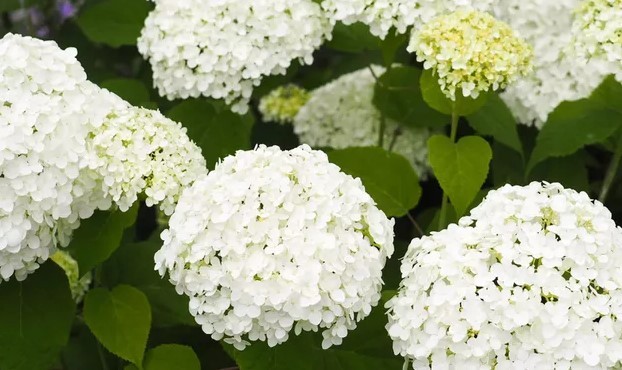Hydrangeas are popular flowering shrubs that can produce stunning blooms with proper care and attention. Here are some basic tips on hydrangea care:
- Light Requirements: Most hydrangea varieties do well in partial sun to partial shade. Morning sun with afternoon shade is typically best, especially in warmer climates where intense mid-day sun can scorch the leaves. However, some species such as Panicle hydrangeas (Hydrangea paniculata) and Smooth hydrangeas (Hydrangea arborescens) can tolerate more sun.
- Soil Conditions: Hydrangeas prefer well-draining soil that is rich in organic matter. The soil pH can affect the flower color of some types of hydrangeas, especially bigleaf hydrangeas (Hydrangea macrophylla). Acidic soil (pH less than 7) will produce blue flowers, while alkaline soil (pH greater than 7) will result in pink flowers.
- Watering: Hydrangeas need plenty of water, especially during the summer months. The soil should stay moist, but not waterlogged. Overwatering can lead to root rot, which can be deadly to the plant.
- Pruning: The optimal time for pruning depends on the variety. For hydrangeas that bloom on old wood (previous season’s stems), such as bigleaf and oakleaf hydrangeas (Hydrangea quercifolia), prune them shortly after they finish blooming in summer. For varieties that bloom on new wood (current season’s growth), like Panicle and Smooth hydrangeas, prune them in late winter or early spring.
- Fertilization: Hydrangeas generally benefit from a balanced fertilizer applied in spring and early summer. Avoid fertilizing late in the growing season, as this can spur new growth that may not harden off in time for winter. If your soil pH is not ideal for the flower color you desire, you can amend the soil with a soil acidifier to make it more acidic (for blue flowers) or with garden lime to make it more alkaline (for pink flowers).
- Winter Care: In colder regions, you may want to protect your hydrangeas in winter. Consider wrapping them in burlap or using a protective cover to shield them from harsh winter winds and frost.
- Pests and Diseases: Watch out for common pests such as aphids, spider mites, and scale. Fungal diseases like powdery mildew, leaf spot, and blight can also affect hydrangeas. Regular inspections and timely interventions can help keep these problems in check.
Remember, every garden and every plant is unique, so what works best may vary depending on your specific circumstances. Monitor your hydrangeas’ health and adjust your care accordingly.


